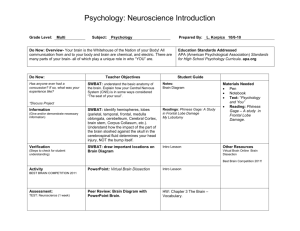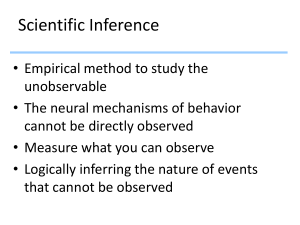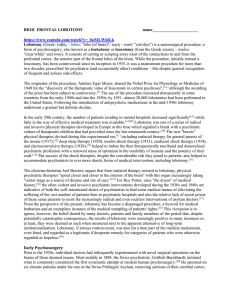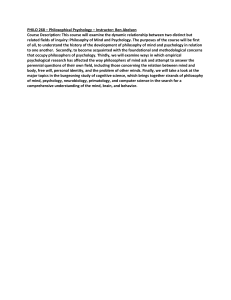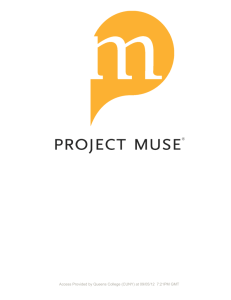Psychology: Neuroscience Unit
advertisement
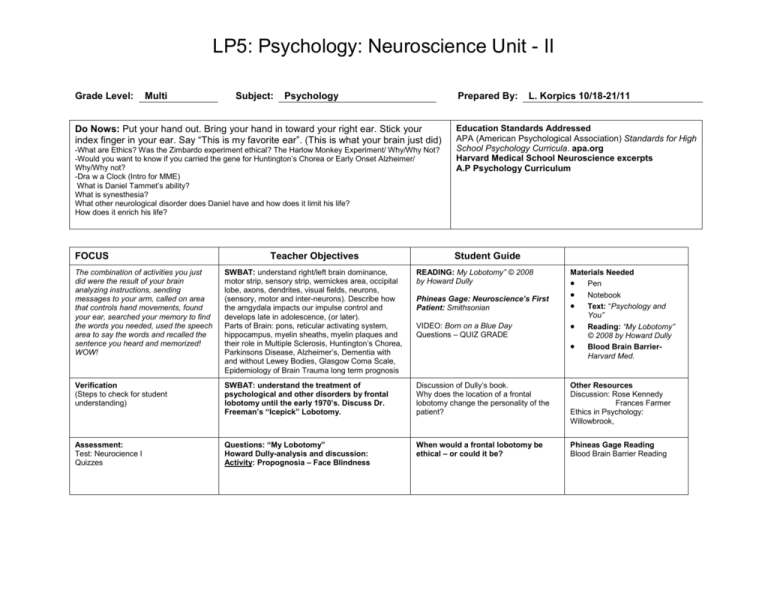
LP5: Psychology: Neuroscience Unit - II Grade Level: Multi Subject: Psychology Prepared By: Do Nows: Put your hand out. Bring your hand in toward your right ear. Stick your index finger in your ear. Say “This is my favorite ear”. (This is what your brain just did) -What are Ethics? Was the Zimbardo experiment ethical? The Harlow Monkey Experiment/ Why/Why Not? -Would you want to know if you carried the gene for Huntington’s Chorea or Early Onset Alzheimer/ Why/Why not? -Dra w a Clock (Intro for MME) What is Daniel Tammet’s ability? What is synesthesia? What other neurological disorder does Daniel have and how does it limit his life? How does it enrich his life? FOCUS Teacher Objectives L. Korpics 10/18-21/11 Education Standards Addressed APA (American Psychological Association) Standards for High School Psychology Curricula. apa.org Harvard Medical School Neuroscience excerpts A.P Psychology Curriculum Student Guide The combination of activities you just did were the result of your brain analyzing instructions, sending messages to your arm, called on area that controls hand movements, found your ear, searched your memory to find the words you needed, used the speech area to say the words and recalled the sentence you heard and memorized! WOW! SWBAT: understand right/left brain dominance, motor strip, sensory strip, wernickes area, occipital lobe, axons, dendrites, visual fields, neurons, (sensory, motor and inter-neurons). Describe how the amgydala impacts our impulse control and develops late in adolescence, (or later). Parts of Brain: pons, reticular activating system, hippocampus, myelin sheaths, myelin plaques and their role in Multiple Sclerosis, Huntington’s Chorea, Parkinsons Disease, Alzheimer’s, Dementia with and without Lewey Bodies, Glasgow Coma Scale, Epidemiology of Brain Trauma long term prognosis READING: My Lobotomy” © 2008 by Howard Dully Verification (Steps to check for student understanding) SWBAT: understand the treatment of psychological and other disorders by frontal lobotomy until the early 1970’s. Discuss Dr. Freeman’s “Icepick” Lobotomy. Discussion of Dully’s book. Why does the location of a frontal lobotomy change the personality of the patient? Other Resources Discussion: Rose Kennedy Frances Farmer Ethics in Psychology: Willowbrook, Assessment: Test: Neurocience I Quizzes Questions: “My Lobotomy” Howard Dully-analysis and discussion: Activity: Propognosia – Face Blindness When would a frontal lobotomy be ethical – or could it be? Phineas Gage Reading Blood Brain Barrier Reading Phineas Gage: Neuroscience’s First Patient: Smithsonian VIDEO: Born on a Blue Day Questions – QUIZ GRADE Materials Needed Pen Notebook Text: “Psychology and You” Reading: “My Lobotomy” © 2008 by Howard Dully Blood Brain BarrierHarvard Med.
